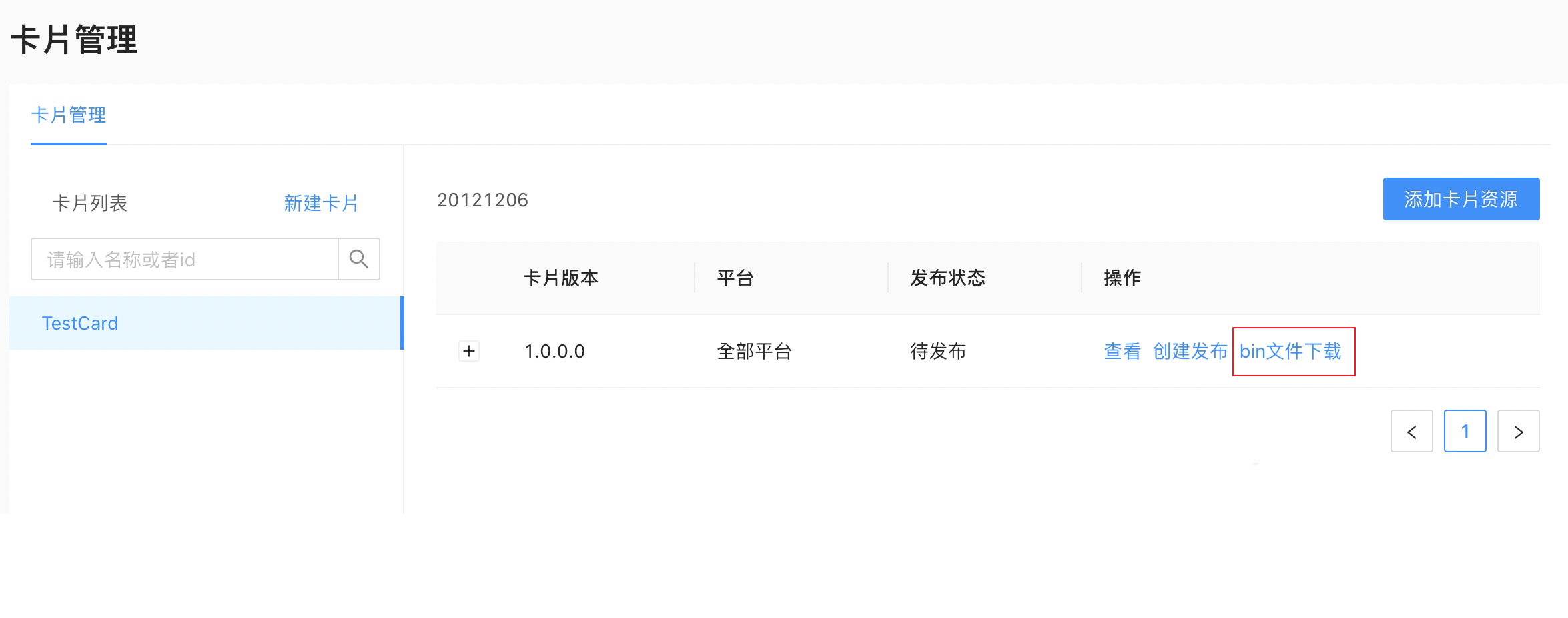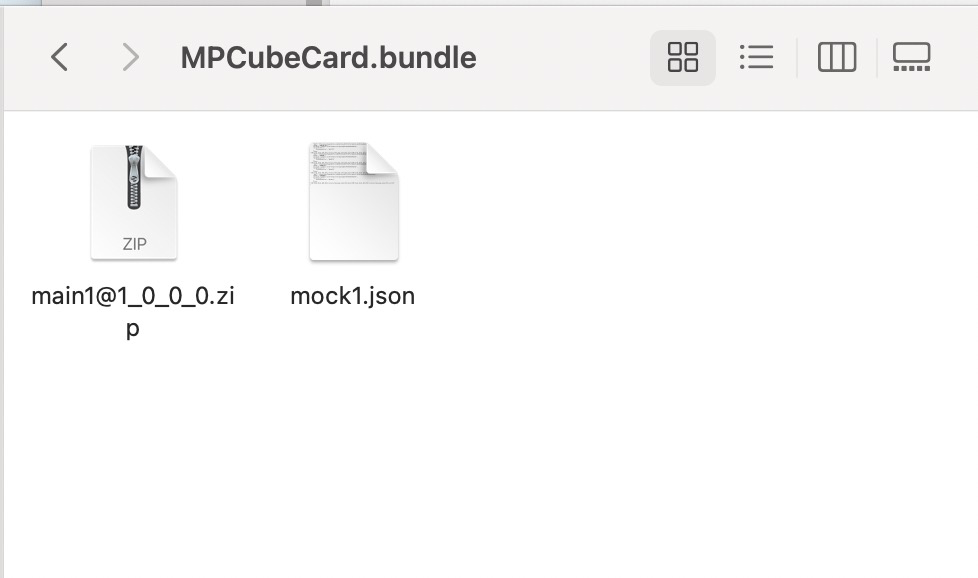本文介紹了在 iOS 客戶端中預置螞蟻動態卡片的操作步驟。
前置條件
操作步驟
從控制臺下載 Bin 文件。

將下載的文件添加到 Bundle 中。
新建 Bundle 文件,將下載的 Bin 文件壓縮成 Zip 包,命名為
卡片 ID@卡片版本,例如main1@1_0_0_0.zip。此處的 JSON 文件為卡片所需要的數據,可以使用文件內置,也可以通過調用接口動態請求,根據自身需要選擇數據來源方式。 說明
說明后期控制臺將直接提供完整命名的 zip 包,無需用戶手動修改命名,只需要添加到 Bundle 中即可。
將 Bundle 引入工程中,引擎初始化時傳入 Bundle 路徑。
- (void)initEngine { //本地資源模板的 Bundle 路徑 NSString *bundlePath = [NSString stringWithFormat:@"%@/%@", [[NSBundle mainBundle] resourcePath], @"MPCubeBundle.bundle"]; CubeEngineConfig *config = [[CubeEngineConfig alloc] init]; [config setBundlePath:bundlePath]; [[CubeService sharedInstance] initWithConfig:config]; }加載預置卡片。
CubeCardConfig *cardConfig = [[CubeCardConfig alloc] init]; //設置卡片版本 [cardConfig setVersion:@"1.0.0.0"]; //設置卡片 ID [cardConfig setTemplteId:@"main1"]; //預設卡片寬度 [cardConfig setWidth:MP_Screen_Width]; //預設卡片高度 [cardConfig setHeight:CGFLOAT_MAX]; NSString *mockBundlePath = [NSString stringWithFormat:@"%@/%@", [[NSBundle mainBundle] resourcePath], @"MPCubeBundle.bundle"]; NSString *fullTplPath = [NSString stringWithFormat:@"%@/%@", mockBundlePath, @"mock1.json"]; NSString *strData = [NSString stringWithContentsOfFile:fullTplPath encoding:NSUTF8StringEncoding error:nil]; //設置卡片數據,此處為 Bundle 內置 Json 讀取數據;也可以請求自身服務端接口獲取數據,但要轉換為 Json 字符串 [cardConfig setData:[self dictionaryWithJsonString:strData]]; //創建卡片 [[CubeEngine sharedInstance] createCard:cardConfig callback:self];
文檔內容是否對您有幫助?